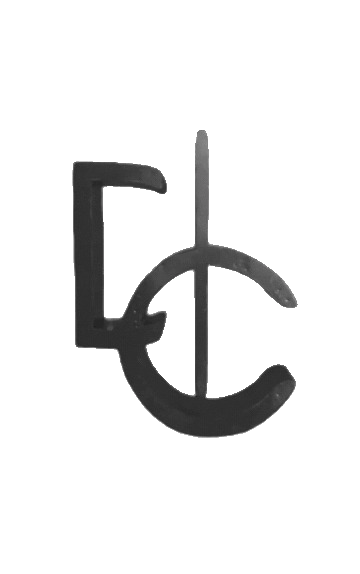
Newsletter, Week 5: Core Training
-
What is your core ?

The core of the body encompasses far more than the commonly recognized "six-pack" abs. In reality, the core comprises a complex network of muscles extending from the chest to the upper thighs, encompassing the entire circumference of your body. Amidst these muscles, the one responsible for the coveted six-pack appearance is the Rectus Abdominus—a single muscle.
The Rectus Abdominus facilitates trunk flexion, as demonstrated in exercises like Crunches and Sit-ups, which have gained popularity for sculpting these abdominal muscles. However, the core is a symphony of muscles, with six other major groups playing integral roles in both spinal health and athletic performance.
- External Obliques: Positioned along the sides of the core, these muscles form the outer boundary. Similar to the Rectus Abdominus, they contribute to trunk flexion. Furthermore, their involvement in rotation makes them vital for activities like throwing a baseball.
- Internal Obliques: Nestled beneath the external obliques, these muscles extend from the pelvis to the ribcage, adding to the core's complexity and functionality.
- Transverse Abdominus (TVA): Comparable to a corset, the TVA encircles your midsection, enhancing stability—a cornerstone of core strength.
- Spinal Erectors: Found in the back, the Spinal Erectors play a crucial role in maintaining an upright posture and supporting the spine's integrity.
- Hip Flexors: Positioned at the front of the hips, the Hip Flexors can contribute to anterior pelvic tilt, a condition often observed in athletes. While a degree of tilt is acceptable, excessive tilt can lead to issues. Effective core workouts play a pivotal role in managing anterior pelvic tilt.
-
Stability within the trunk

To begin, our initial focus is on cultivating trunk stability. This entails engaging in a series of anti-movements targeted at the core muscles. These movements encompass:
- Anti-Flexion: It can help combat athletes resist being pulled forward by their opponents. It can also help them prevent being pulled out of position by the momentum of their own punches.
- Anti-Extension: Anti-extension training strengthens the spinal erectors and the traverse abdominis. The purpose of anti-extension training is to give you the ability to resist someone trying to fold you backwards.
- Anti-Rotation: Anti-rotation movements can give athletes the strength to fight that urge to rotate during a sprint. Anti-rotation movements can also help an athlete resist an opponent pulling them, fight momentum pulling them in a different direction, and more.
- Anti-Lateral Flexion: Anti-lateral flexion is your ability to resist flexing at the sides. An example is if you’re holding a heavy object, like a suitcase, in one hand, but not the other.
Incorporating these anti-movements involves opposing external resistance whether in the form of weights or other forces to bolster stability. This approach, akin to defensive strategies, is valuable for developing the foundational strength necessary for tasks such as blocking or defensive maneuvers. Here are additional instances of anti-movement patterns that exemplify this concept
-
The core is not only designed to resist movement!

Certainly, it's crucial to recognize that the core serves not only as a stabilizer but also as a generator of movement. Incorporating exercises that actively engage the core's capacity for movement is equally essential for a comprehensive training regimen. This encompasses:
- Dynamic Flexion and Extension: Initiating controlled forward bends and arching motions that originate from the core muscles.
- Rotational Movements: Executing controlled twists that engage the core's rotational strength, contributing to coordinated movements.
- Lateral Flexion: Performing controlled side-bending movements that showcase the core's ability to initiate and control lateral shifts.
By integrating these dynamic movements into your training routine, you harness the full spectrum of the core's capabilities. This approach not only fortifies its role in stabilizing the body but also maximizes its potential as a prime mover in various functional activities. Striking a balance between anti-movements and active movements ensures a well-rounded core training regimen.
-
Bonus

As a bonus, one of my favorite ways of training the core to resist movement, loaded carries !
Loaded Carries stand as one of the most fundamental exercises in your arsenal. They deserve a prominent place within your training regimen, right alongside other cornerstone movements like pushing, pulling, squatting, and hip hinging. These foundational movements, when loaded and rigorously trained, bolster overall body resilience, actively guarding against potential injuries.
Whether the objective is to amplify strength, foster muscle growth, rehabilitate an injury, or enhance work capacity, embracing loaded carries is the optimal route. These carries, in their diverse variations, not only challenge the core more effectively than traditional crunches or direct core exercises but also put grip strength and full-body stability to the test.
The benefits don't halt there. Many loaded carry variations pose an additional boon by demanding shoulder stability. This, in turn, fosters more advantageous shoulder positions for training, thus promoting optimized shoulder health.
If the aim is to cultivate strength, elevate metabolic capacity, and fortify your shoulders and back against potential setbacks, incorporating loaded carries into your program is imperative. Now, let's revisit the fundamental aspects of the carry to set the stage for your success.
